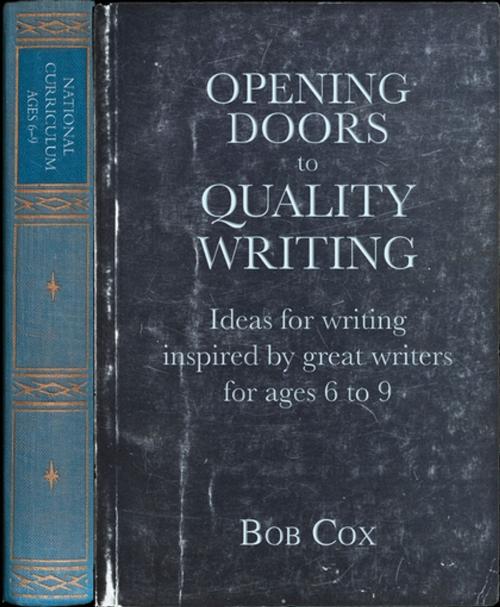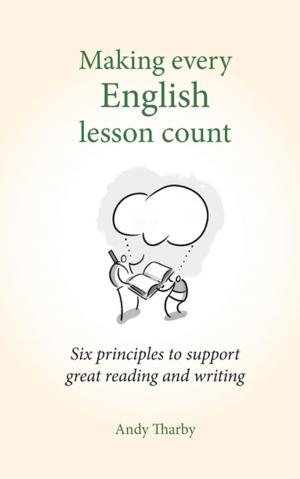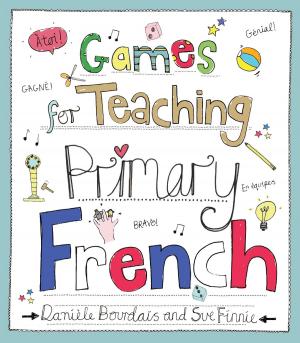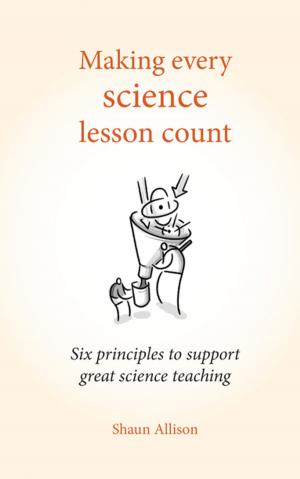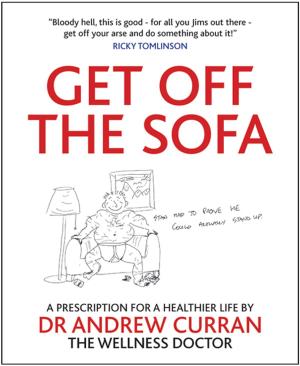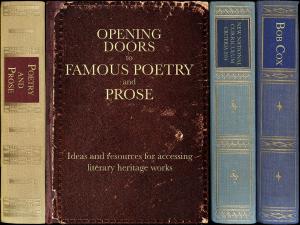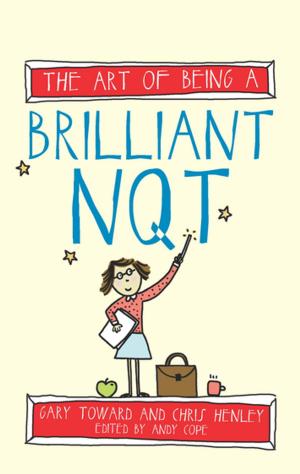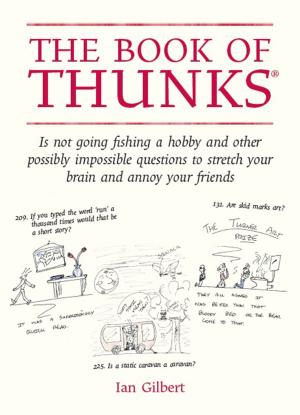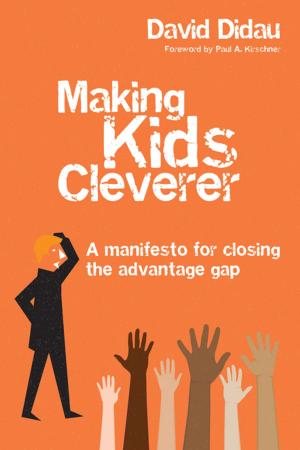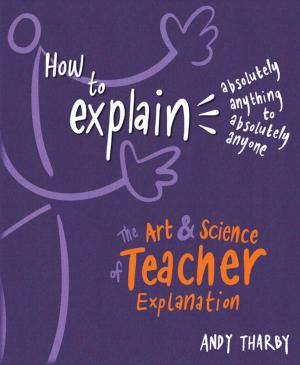Opening Doors to Quality Writing 6-11
Ideas for writing inspired by great writers
Nonfiction, Reference & Language, Education & Teaching, Teaching, Teaching Methods| Author: | Bob Cox | ISBN: | 9781785831232 |
| Publisher: | Crown House Publishing | Publication: | July 30, 2016 |
| Imprint: | Crown House Publishing | Language: | English |
| Author: | Bob Cox |
| ISBN: | 9781785831232 |
| Publisher: | Crown House Publishing |
| Publication: | July 30, 2016 |
| Imprint: | Crown House Publishing |
| Language: | English |
In Opening Doors to Famous Poetry and Prose, Bob Cox introduced teachers to engaging strategies which use literary heritage texts as the stimulus for excellent learning. This new companion book, Opening Doors to Quality Writing, for ages 6 to 9, puts the focus on pupils producing quality writing – developing their literacy skills and a love of reading in the process. In the course of his educational consultancy work, Bob has seen many teachers successfully use the scope and depth which literature can offer to inspire high standards, mastery learning and, above all, a love of language in its many forms. Schools using the ‘opening doors’ strategies told Bob they led to: more teacher empowerment and confidence; more knowledge building for pupils and teachers; a growing confidence with literature, including poetry; planning from the top becoming a norm; planning for mastery learning becoming a norm; improved comprehension skills; improved quality writing and associated excitement. They also asked Bob for further examples of inspiring, quality texts, and more ways in which pupils of all abilities can access them. Bob was only too happy to oblige. These 15 units of work cover poetry and prose: each unit provides exciting stimulus material, creative ideas for writing projects, and differentiation and support strategies, meaning all pupils can achieve the quality writing objectives. All the units should help teachers facilitate understanding of the challenging texts and maximise the huge potential for quality writing. Discover a multitude of ready-to-use ideas, inspired by classic literature and great writers’ works, along with plenty of new strategies and advice. Units include: Part 1: Opening doors to poetry 1. His Waistcoat and Trousers Were Made of Pork Chops – ‘The New Vestments’ by Edward Lear 2. Prefabulous Animiles – ‘The Hippocrump’ by James Reeves 3. Slowly the Tide Creeps Up the Sand – ‘Slowly’ by James Reeves 4. Colour Your World – ‘What is Pink?’ by Christina Rossetti 5. The Nymph and the Goblin – ‘Overheard on a Saltmarsh’ by Harold Monro 6. Pictures in My Head – ‘A Child’s Thought’ by Robert Louis Stevenson 7. He’s Behind You! – ‘The Elf Singing’ by William Allingham 8. The Sounds of Silence – ‘Lonely Street’ by Francisco López Merino 9. Pond Dipping – ‘Daddy Fell into the Pond’ by Alfred Noyes Part 2: Opening doors to prose 10. The Making of World-pap – The Water Babies: A Fairy Tale for a Land-Baby by Charles 11. Master No-book and the Fairy Teach-all – Uncle David’s Nonsensical Story about Giants and Fairies by Catherine Sinclair 12. Turning the Key – The Secret Garden by Frances Hodgson Burnett 13. The Old Oak Chest – The Riddle by Walter de la Mare 14. The Winking Scarecrow – The Wizard of Oz by L. Frank Baum 15. The Psammead – Five Children and It by E. Nesbit
In Opening Doors to Famous Poetry and Prose, Bob Cox introduced teachers to engaging strategies which use literary heritage texts as the stimulus for excellent learning. This new companion book, Opening Doors to Quality Writing, for ages 6 to 9, puts the focus on pupils producing quality writing – developing their literacy skills and a love of reading in the process. In the course of his educational consultancy work, Bob has seen many teachers successfully use the scope and depth which literature can offer to inspire high standards, mastery learning and, above all, a love of language in its many forms. Schools using the ‘opening doors’ strategies told Bob they led to: more teacher empowerment and confidence; more knowledge building for pupils and teachers; a growing confidence with literature, including poetry; planning from the top becoming a norm; planning for mastery learning becoming a norm; improved comprehension skills; improved quality writing and associated excitement. They also asked Bob for further examples of inspiring, quality texts, and more ways in which pupils of all abilities can access them. Bob was only too happy to oblige. These 15 units of work cover poetry and prose: each unit provides exciting stimulus material, creative ideas for writing projects, and differentiation and support strategies, meaning all pupils can achieve the quality writing objectives. All the units should help teachers facilitate understanding of the challenging texts and maximise the huge potential for quality writing. Discover a multitude of ready-to-use ideas, inspired by classic literature and great writers’ works, along with plenty of new strategies and advice. Units include: Part 1: Opening doors to poetry 1. His Waistcoat and Trousers Were Made of Pork Chops – ‘The New Vestments’ by Edward Lear 2. Prefabulous Animiles – ‘The Hippocrump’ by James Reeves 3. Slowly the Tide Creeps Up the Sand – ‘Slowly’ by James Reeves 4. Colour Your World – ‘What is Pink?’ by Christina Rossetti 5. The Nymph and the Goblin – ‘Overheard on a Saltmarsh’ by Harold Monro 6. Pictures in My Head – ‘A Child’s Thought’ by Robert Louis Stevenson 7. He’s Behind You! – ‘The Elf Singing’ by William Allingham 8. The Sounds of Silence – ‘Lonely Street’ by Francisco López Merino 9. Pond Dipping – ‘Daddy Fell into the Pond’ by Alfred Noyes Part 2: Opening doors to prose 10. The Making of World-pap – The Water Babies: A Fairy Tale for a Land-Baby by Charles 11. Master No-book and the Fairy Teach-all – Uncle David’s Nonsensical Story about Giants and Fairies by Catherine Sinclair 12. Turning the Key – The Secret Garden by Frances Hodgson Burnett 13. The Old Oak Chest – The Riddle by Walter de la Mare 14. The Winking Scarecrow – The Wizard of Oz by L. Frank Baum 15. The Psammead – Five Children and It by E. Nesbit
